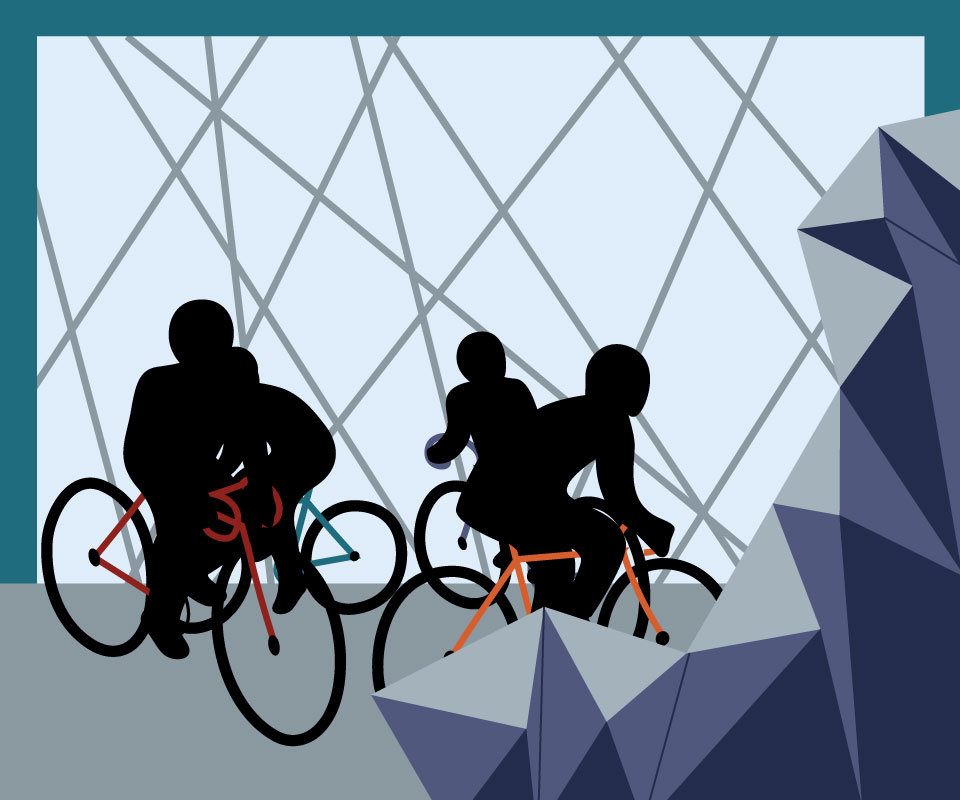Theatre students’s production aptly depicts the gamut of human emotions
The curtains open. An empty stage, save for a single geometric structure to the right of it, and glowing stage lights, the otherworldly feeling already present in the theatre. The narrator steps out, and the show begins.
As one of their fall productions, the Concordia Department of Theatre presented their interpretation of Animals In Paradise from Nov. 7 to 11. Written by British playwright Howard Barker and directed by Jean-Frédéric Messier, the play details the story of an endless conflict between the Swedes and the Danes. Through this context, the complexities of humanity and the human condition are explored.
The play’s storyline is filled with cruelty, which is not a surprise given its focus on a timeless war. However, with dark humour and complex emotional representations of human behaviours, the play presents a multi-dimensional exploration of humanity, with diverse and well-developed characters who are talentedly expressed through the theatre students’s impressive portrayals.
Caroline Mawhinney, a third-year theatre student at Concordia, delivered a notable performance as Mrs. Norris, a woman who is consistently pregnant and believes that having children is the only importance in life. Mawhinney’s character provided comedic relief to the dark nature of the play, while also serving as a symbol of the greater societal beliefs present within the play’s context and setting.
Another student, Gregory-Yves Fénélon, portrayed the character of Taxis, a ruling king who appears to be void of empathy and enjoys the suffering of others. Yet, as the story unfolds, Taxis shows his complexity and emotional vulnerability as he falls in love, has a daughter and experiences loss. Fénélon expressively performed this character’s transitions and complexities, allowing the audience to get lost in the imagined world, following Taxis’s experiences and personal growth.
Although it followed the original format of Barker’s Animals In Paradise, this performance had a surrealist tone, with characters who appeared otherworldly and outrageous. As explained in the Concordia production’s program,“Barker’s writing […] is not bound down by the constraints of reality,” according to the director, Messier. “Part of his genius is to write such improbable scenes in a way that makes them seem truer than life.”
Adding to this production’s detailed interpretation of Barker’s work were the amazing costumes, provided by the university’s costume shop. Extravagant and intricately detailed, the stylistic elements of the characters’s wardrobes helped fully transport the audience into the otherworldly realm of the production.
Other small details, such as the repeated motif of several figures circling on bicycles, and blowing whistles and noisemakers,added to the production, emphasizing the unsettling, surrealist nature of the setting.
Throughout the entire play, Animals In Paradise creates a complex and, at times, confusing image of the world. Amid themes of love and loss, the production contrasts cruelty and animalistic behaviours with relatable, humanistic emotions and reactions. Despite being decisively removed from the context of the contemporary everyday, the play and its characters are still connected to the audience and the global experience of emotions. All of these aspects, along with the talented cast and crew, created an interesting, complex performance that took the audience to a place of surrealism while still connecting on a humanistic, empathetic, emotional level.
Graphic Ana Bilokin.
